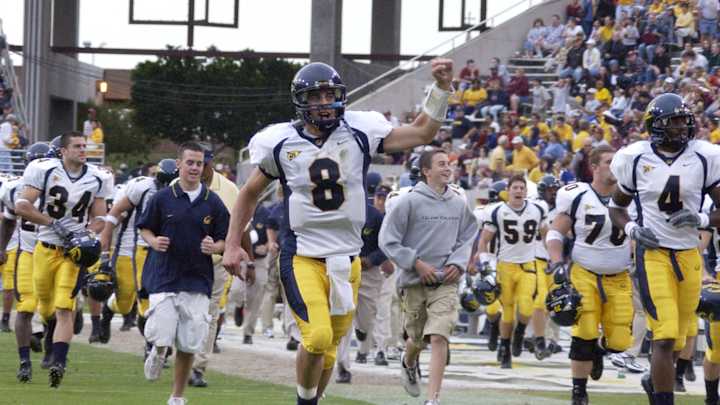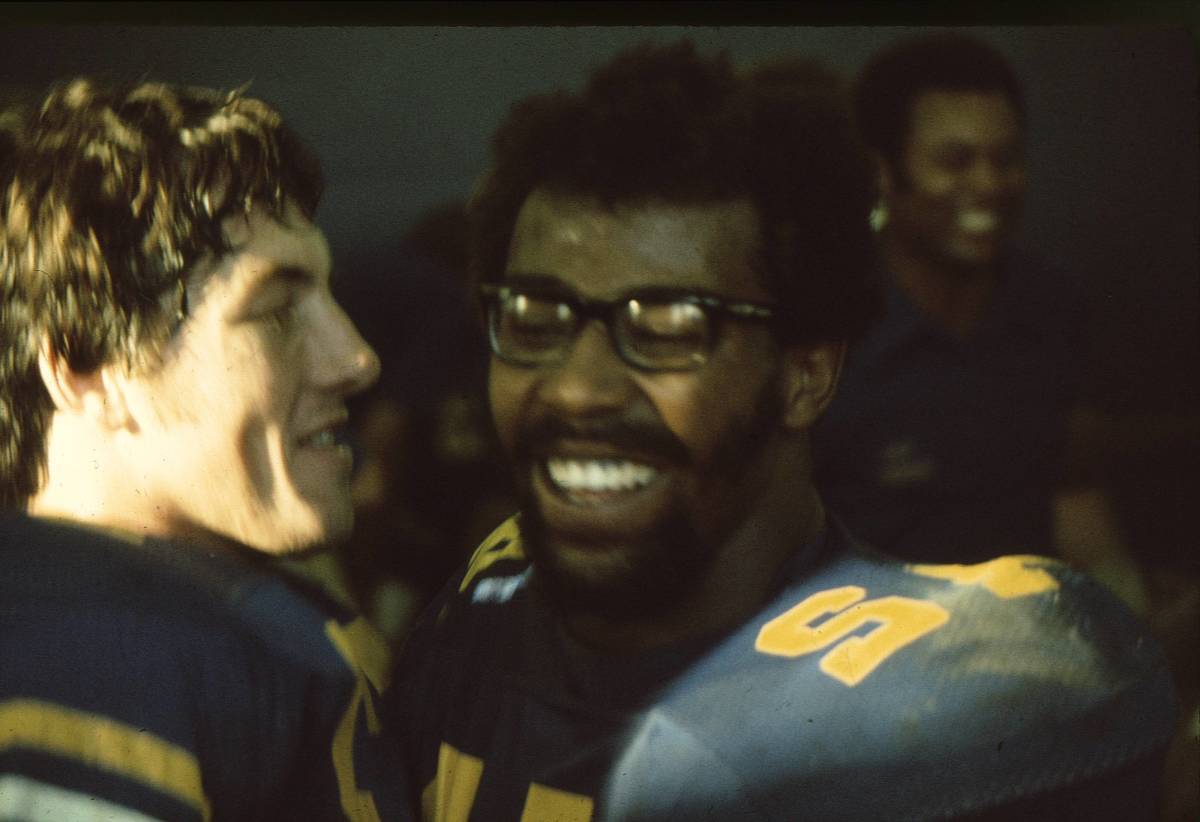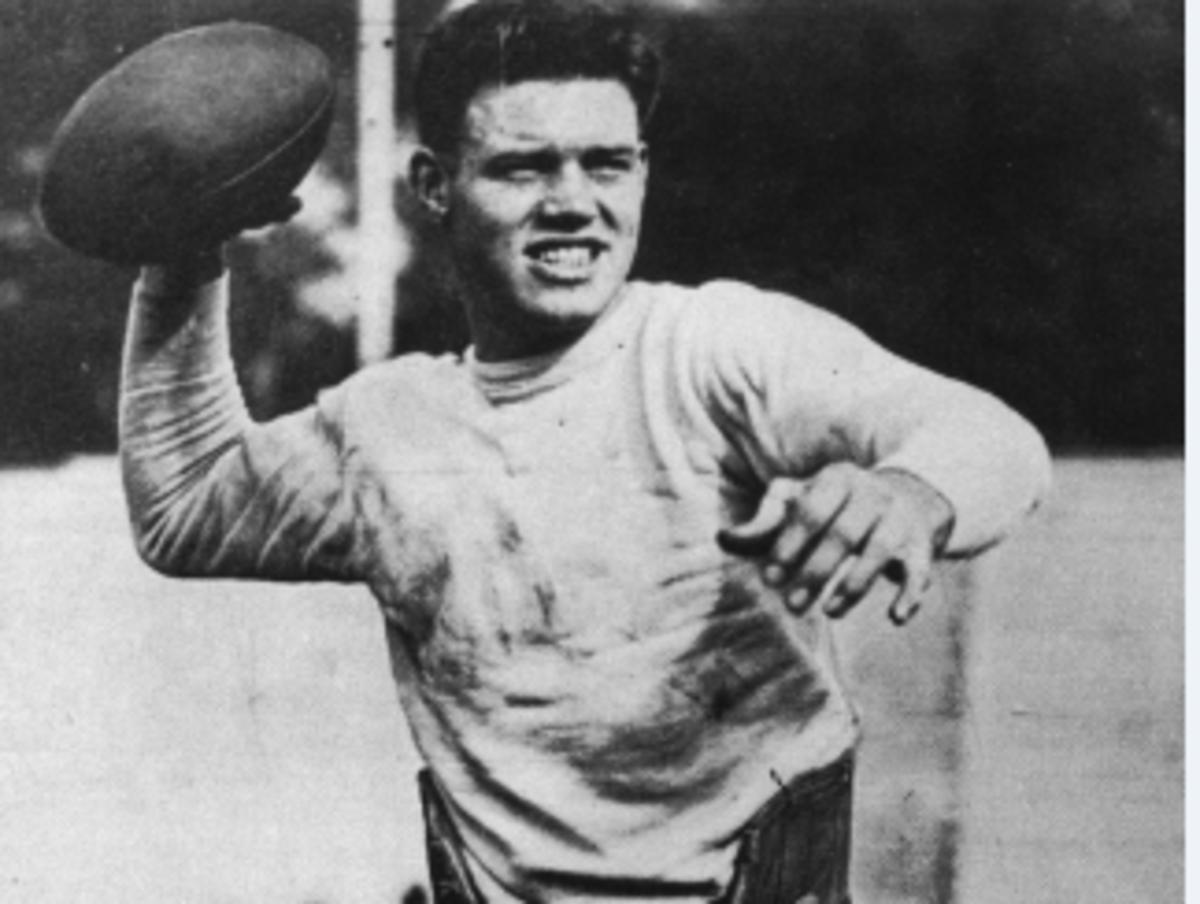Cal Football: Cal Players Left Off ESPN's 150 Greatest Players in History

Stanford has five players listed in ESPN’s ranking of the 150 greatest players in college football's 150-year history.
Cal has zero.
That’s right, while USC and Notre Dame lead the way with nine players each on this list, which was released in mid-January, the Golden Bears do not have a single player that was deemed worthy of being ranked among the top 150 players of alltime. And we can think of at least one Cal player who should have been included, which we will discuss later.
Cal was certainly not the only college left out as only five of the current Pac-12 schools were represented.
And it’s easy -- and somewhat childish -- to nitpick at some of the selections made by the 150-person panel. But we'll nitpick anyway.
Take Roger Staubach, for example, a player who was ranked as the 11th-best player in college football history. He was great in 1963 as a junior at Navy, when he won the Heisman Trophy, but few people choose to look at his final college season. In 1964, Staubach threw 10 interceptions and just four touchdown passes and rushed 104 times for minus-1 yard (yes, Roger the Dodger had negative rushing yards as a senior) for a Navy team that went 3-6-1 that year. Sure, he had a great pro career, but this is the 150 greatest college players.
Enough sour grapes. Let’s look at some Cal players that could have been considered.
Quarterback Aaron Rodgers – He immediately comes to mind, but primarily because of his outstanding pro career. He finished only ninth in the Heisman Trophy voting his final year at Cal in 2004, and it would be difficult to put him in this illustrious top 150 based on his college work alone.
Running back Jackie Jensen – Jensen rushed for 1,080 yards in 1948 at a time when 1,000-yard rushing seasons were rate. He was a consensus All-American that year, and finished fourth in the Heisman voting. But he had the misfortune of playing at the same time as four other players who are listed in the ESPN top 150 – Doak Walker (No. 23), Chuck Bednarik (No. 30), Leon Hart (No. 88) and Charlie Justice (No. 133) – getting overshadowed by that foursome. Plus Jensen played pro baseball instead of pro football, winning an MVP as a member of the Boston Red Sox.
Running back Chuck Muncie – The star of Cal’s 1975 team that tied for first place in the Pac-8, Muncie rushed for 1,460 yards and finished second in the 1975 Heisman voting behind only Archie Griffin, who is ranked No. 4 on the ESPN list. Muncie had an outstanding pro career. Presumably his off-field issues did not eliminate Muncie from consideration for the top-150 list since O.J. Simpson is ranked No. 23.

Center Roy Riegels – A second-team Associated Press All-American on the 1929 Cal team that went 7-1-1, Riegels has name recognition for his wrong-way run in the 1929 Rose Bowl loss to Georgia Tech. He was on several All-America teams but was never a consensus All-American.
Linebacker Les Richter – One of just two Cal players who was a consensus All-American twice (1950 and 1951), Richter was the second player taken in the 1952 NFL Draft and played in eight Pro Bowls as a member of the Rams. Fourteeen linebackers are ranked among the ESPN top 150 players, and Richter compares favorably with several of them.
Running back Vic Bottari – After finishing eighth in the 1937 Heisman voting, Bottari rushed for 134 yards, scored both touchdowns, intercepted a pass and played all 60 minutes in the Bears’ 13-0 win over Alabama in the 1938 Rose Bowl. Bottari finished fifth in the 1938 Heisman Trophy voting.
Tight end Tony Gonzalez: You could make a pretty good argument that Gonzalez is the best tight end in history. Athlon makes that case in its rankings of tight ends. Gonzalez was a consensus All-America selection in 1996, his final year at Cal, but he was a first-team all-conference choice only once, and his college numbers might not wow voters on this panel.
And you could toss in the names of Johnny Olszewski, Marshawn Lynch, Joe Kapp, Dan McMillan, Walter Gordon, Steve Bartkowski, Craig Morton, Benny Lom and Stan Barnes and make a case for them, although you might not get much support for their inclusion among the top 150.
But there is one Cal guy that should be on ESPN’s top-150 list.
His name is Harold “Brick” Muller.
Muller was a consensus All-American as an end in both 1921 and 1922, when only 11 players were named to All-America teams. He was part of the first class of inductees to College Football Hall of Fame in 1951, nearly 30 years after he played.
Obviously, the panel who voted on the ESPN rankings would not be familiar with players who played in that era, and only the five players with iconic names from that period were included – Jim Thorpe, Red Grange, Bronko Nagurski, George Gipp and Ernie Nevers. But Knute Rockne did not make a speech about Muller, and Muller was never the subject of a Grantland Rice story, does not have an award named after him and is not considered the greatest American athlete in history. Plus he has no significant pro football history (one year with a traveling team before becoming a surgeon), although he did win a silver medal in the high jump at the 1920 Olympics.
But Muller does have the 1921 Rose Bowl, a 28-0 Cal victory over Ohio State that changed opinions about West Coast football and made a star of Muller, who was unfamiliar to the Eastern and Midwestern media.

That day Muller had two interceptions, three recovered fumbles, five receptions and three completed passes, not including one pass negated by a penalty. And remember, he was an end, not a back.
His majestic 46-yard pass – when passes were rare – was what struck with sportswriters at the game. One writer called it the “heave that will be talked about for years to come.” Another wrote that the pass “will be used as a basis of comparison for all other throws for years to come.” One writer concluded that Muller “is the greatest thrower of the forward pass in the country.”
And, let's say it again, Muller was an end.
Cal finished that 1920 season, which concluded with the 1921 Rose Bowl, with a 9-0-0 record.
Muller is certainly should be among the top 150 players of alltime, but the final spot is occupied by Baker Mayfield.
